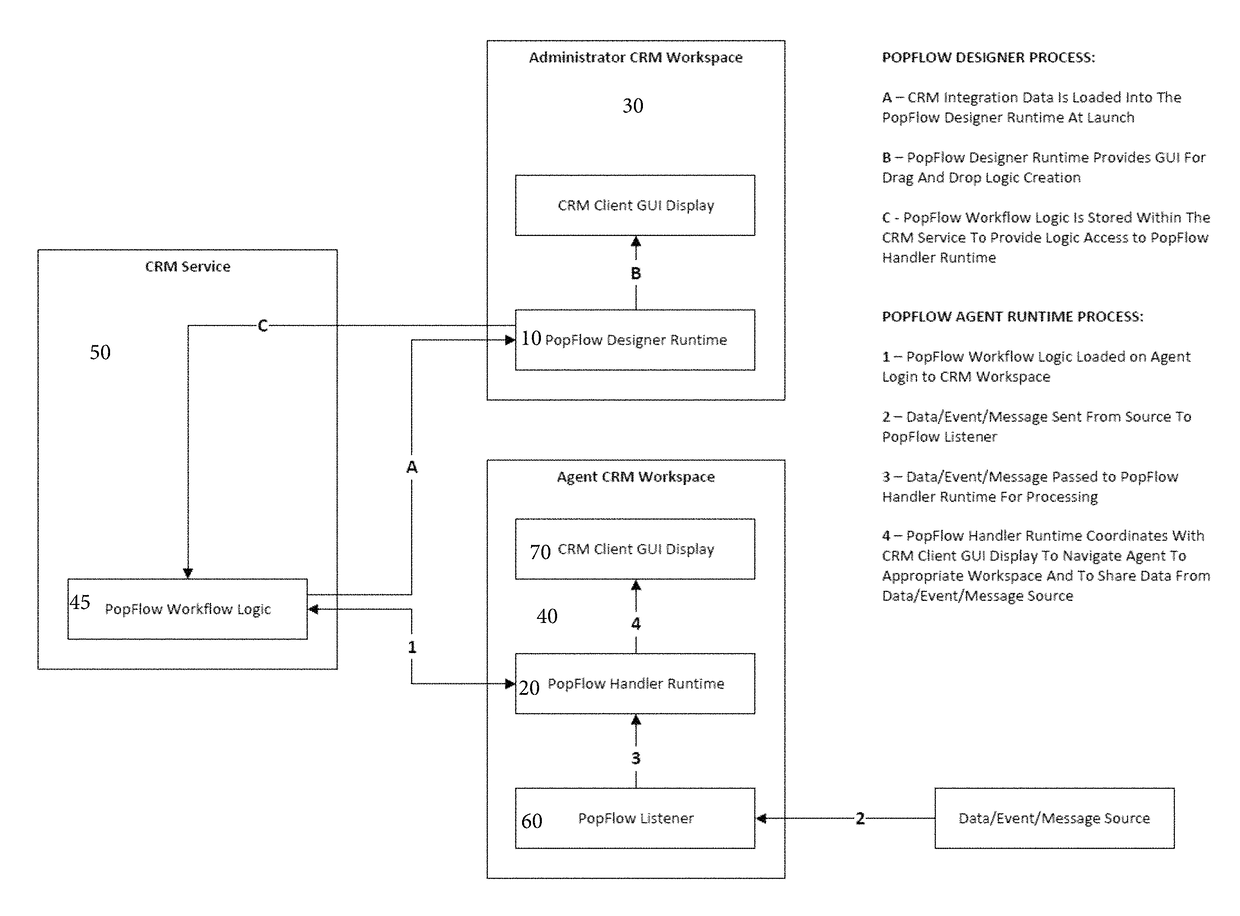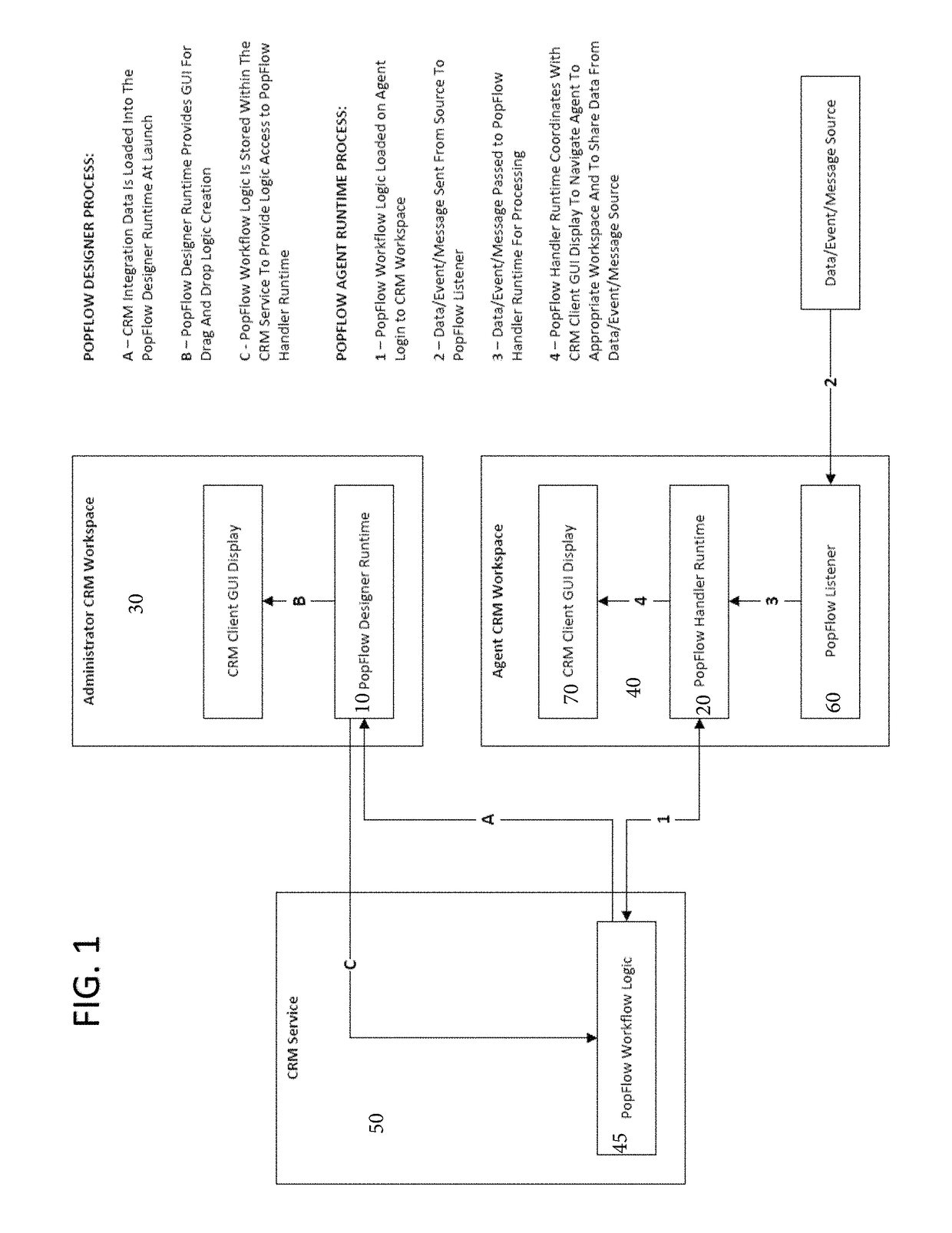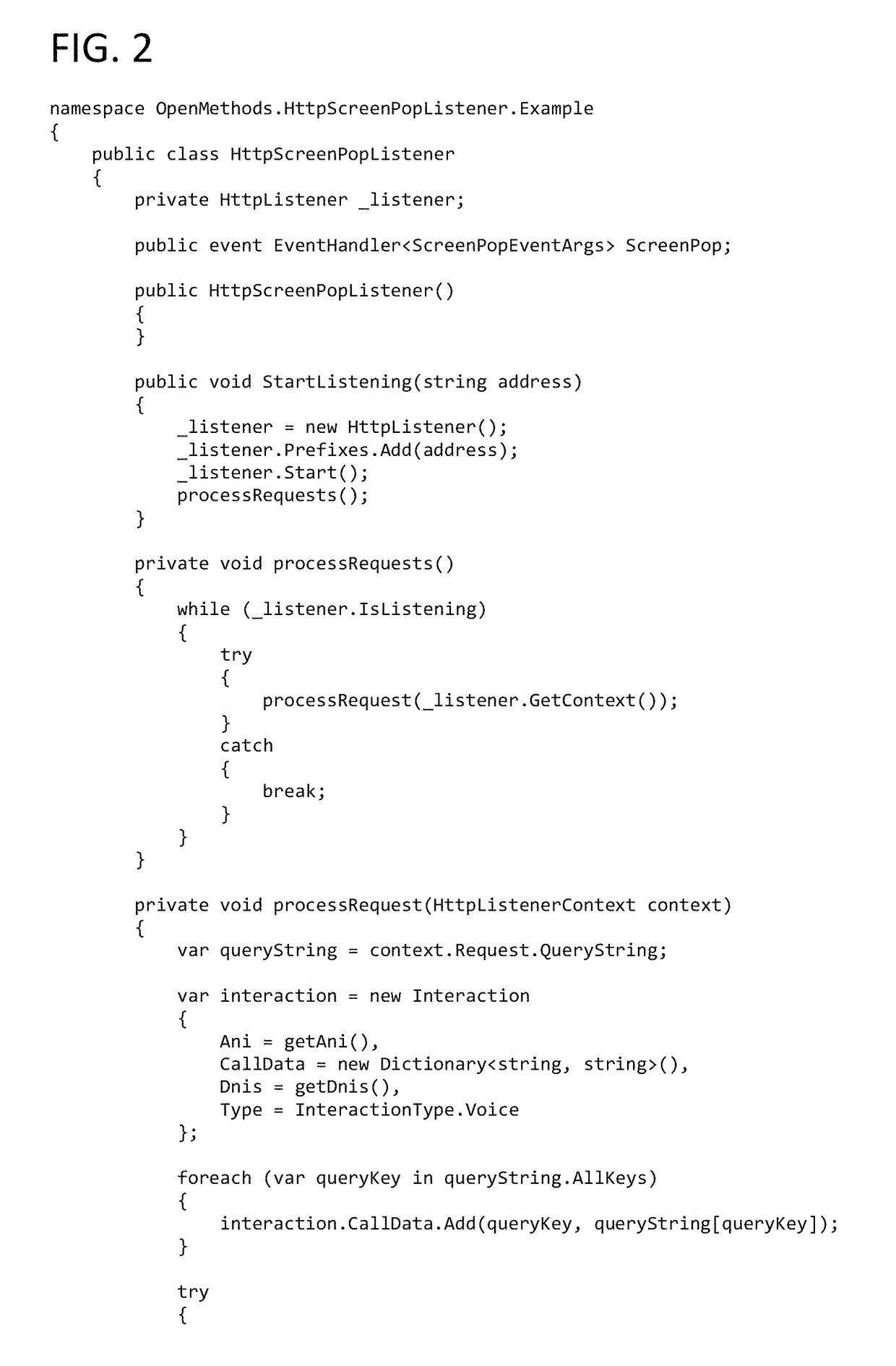Second, contact centers can be simple and straight forward or very complex.
Existing
contact center technology tends to suffer from the same set of problems and obstacles.
First,
contact center systems tend to operate largely in isolation and share data reluctantly and at high cost between systems.
While many businesses have CRM systems, they are typically separate from the interaction
workflow and are not automated to utilize customer data gathered from external sources.
This can result in customers not receiving prompt service, or not allowing customer service representatives to provide the types of customized and personalized service that CRM systems are designed to facilitate.
Second, real-
time data access is limited because information collected during customer interactions is collected and stored thru highly specialized and technical interfaces, the use of which requires a high level of knowledge and
programming on how to extract data from each system type and pass it to another system type.
Although prior art systems are sometimes able to provide such
data extraction and passing, it is difficult and expensive to achieve, because it must be programmed by CTI programming specialists, rather than by customer service center managers who are knowledgeable about the needs of their customers and the specific information needed by live-agents in order to make the customer interaction more effective, more appealing to the customer, and shorter.
The services of such programmers are costly, can be error prone, take significant amounts of time to perform and the results are often limited in functionality, flexibility and compatibility.
One cause for such drawbacks is that such programmers are often primarily concerned with the technical aspects of the workflows, but have little hands-on familiarity with the day-to-day needs of a live-agent customer service representative, or the demands of contact center managers who are experienced in providing customer service.
On the other hand, customer service agents, contact center managers, or CRM administrators typically have little skill or familiarity with how to write code or create a CTI integration.
Therefore, to develop a single customer service
work flow often requires weeks of effort, coordination, and testing between a contact center manager and a CTI
programmer, thereby costing thousands or tens of thousands of dollars and slowing the implementation of new customer service interaction workflows.
Fourth, contact center systems are typically composed of a complex array of hardware and
software, each of which requires
specialized knowledge to operate and integrate, and each of which has its own technical challenges and idiosyncrasies.
However, the closed nature of these systems limited their flexibility.
Fifth, because of this complex mix of elements, contact centers face a regularly changing solution matrix, in that each of these elements and solutions have a limited and planned lifecycle and are therefore prone to periodic replacement to reduce costs and enhance functionality.
Sixth, business processes are constantly changing which can cause costly integration efforts between solutions to be discarded.
Seventh, because of the complexity of the integrations and the dynamic environments within which contact centers exist, it is common that information about a customer that has been collected through an IVR system is not transferred with the interaction when the live-agent picks up the phone.
In prior art systems, integration and information flows between a communication platform, interaction
workflow / screen pop
software,
automation platform, and CRM systems, is poor or nonexistent.
Moreover, changing or upgrading one component of a system often makes integration and information flows between the systems unworkable or causes failures of previously
integrated systems.
This often results in a failure to communicate important information—including information that was previously collected during the interaction by automated means—to a live-agent customer service representative that accepts an interaction or has an interaction transferred from another agent.
As such, nearly everyone who has communicated with a customer service contact center has had the unpleasant experience of entering data into an automated system (such as an account number), only to be asked to repeat the same information when their interaction is transferred to a live-agent, or a higher-tier customer service agent.
Such problems reduce the quality of customer service, result in customer
frustration, and prolong customer service issues, all of which result in higher costs to provide customer service.
As a result of all of these factors, the efficiency and effectiveness of how the contact center meets the needs of the customer is frequently impacted and degraded from the optimal promise of these systems.
This has a direct negative
impact on the customer experience and the amount of time necessary to resolve any given customer service issue.
First, if the interaction takes too long, the customer will grow frustrated, often defeating or reducing the good will that can be generated by promptly and efficiently dealing with a customer service interaction.
Second, because live-agent customer service representatives are typically paid by the hour, the number of interactions that each agent can
handle in an hour has a direct relationship to the expense incurred to provide contact center customer service.
 Login to View More
Login to View More  Login to View More
Login to View More 


